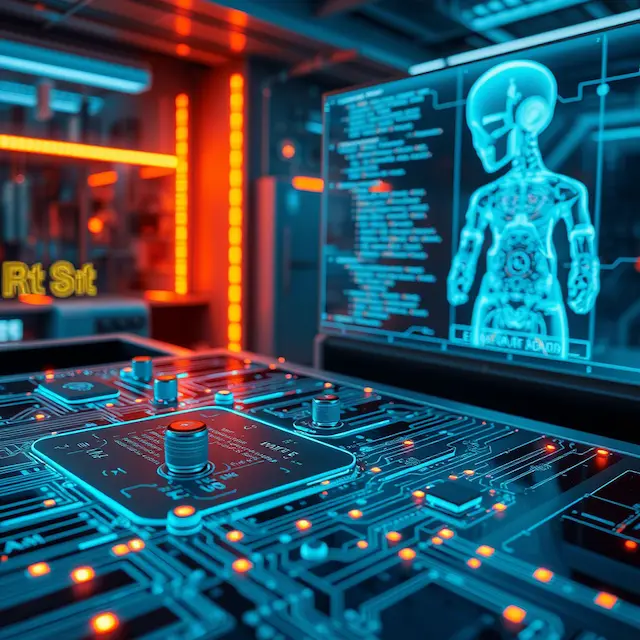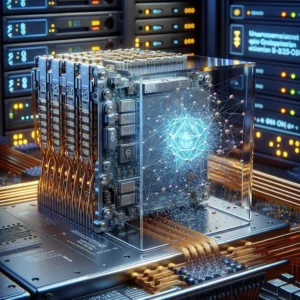Artificial Intelligence (AI)
Mechanisms, Processes & Applications




Computational Linguistics
(AI) Artificial Intelligence
Artificial Intelligence is a branch of computer science and computational linguistics focused on modeling human-like tasks and reasoning processes, allowing machines to simulate decision-making capabilities.
AI is one of the most disruptive technologies of our time. From chatbots to self-driving cars, from voice recognition systems to predictive healthcare tools—AI is reshaping how we live and work. But what exactly is artificial intelligence? How does it work, and where is it used?
🌐 Where OSINT Meets AI
Open Source Intelligence (OSINT), which relies on publicly accessible data, benefits significantly from AI technologies—accelerating and optimizing data analysis.
🤖 Machine Learning
From spam filters and shopping suggestions to voice recognition and search engines, Machine Learning is deeply embedded in our daily routines. Big tech platforms widely adopt ML and integrate it with AI for better user experiences.
🔐 Cybersecurity and Privacy
In cybersecurity, AI plays a key role in detecting and preventing threats quickly and effectively.
Machine learning algorithms identify suspicious patterns and anomalies in network traffic, often catching previously unknown vulnerabilities.
These AI systems continuously adapt to new threats, strengthening digital defenses.
🧩 The AI Act
The AI Act categorizes AI systems based on risk level and sets rules for safe usage. It introduces compliance and safety requirements before AI systems can enter the European market.
machine learning e deep learning
🔍 What Is Artificial Intelligence?
Artificial Intelligence develops systems capable of mimicking human cognitive functions like reasoning, learning, and problem-solving. In short, AI enables machines to perform tasks that were once only within human reach.
These systems use advanced algorithms to analyze data, recognize patterns, and make autonomous decisions. Thanks to machine learning and deep learning, machines improve over time by learning from errors and adapting to new scenarios.

The Most Powerful OSINT&AI Tools in One Place!
Discover our ever-growing collection of free tools for online research, data analysis, and AI-powered OSINT investigations.
Browse the Tool List 🔍The Two Main Types of Artificial Intelligence: Strong AI and Weak AI
Since the 1950s, AI has fascinated researchers who envisioned machines that could think, learn, and reason like humans. Over time, this field evolved into two main branches: Strong AI and Weak AI.
🔹 Strong AI: Machines that think like humans (self-awareness)
Strong AI proposes that machines could one day reach human-level intelligence, complete with self-awareness and independent reasoning. These systems could solve problems without external help and understand their own decision-making processes. Often linked to AGI (Artificial General Intelligence), Strong AI is still theoretical—true “thinking machines” don’t exist yet.
🔹 Weak AI: Task-specific intelligence
Weak AI, on the other hand, is already all around us. It’s built for specific tasks without truly “understanding” them.
- Voice assistants like Siri, Alexa, and Google Assistant respond to requests without real comprehension.
- Facial recognition systems can identify faces in photos and videos but lack awareness of what a face is.
- Recommendation engines suggest content on Netflix or Amazon based on user data but don’t think independently.
Weak AI doesn’t aim to replicate human thought—its purpose is to optimize and automate specific tasks.
Artificial Intelligence refers to building systems—both software and hardware—that replicate human capabilities like learning, adapting, reasoning, and planning. These systems are designed to analyze their environment, process data, and act autonomously.
⚙️ How Does Artificial Intelligence Work?
AI relies on three core cognitive functions:
🚀 Ready to explore OSINT, AI, and Cybersecurity but not sure where to begin?
Start with a curated selection of hands-on guides made for students, self-learners, professionals, and tech enthusiasts.
📘 Build valuable and up-to-date skills to navigate the web safely and confidently.
analisi di dati
📊 Data and Algorithms: The Core of AI
AI is powered by the analysis of large datasets (big data), processed by sophisticated mathematical models. AI algorithms convert this data into actionable insights, enabling systems to:
✅ Recognize images and sounds
✅ Predict future outcomes
✅ Respond smartly to user input
🛠️ Programming Languages for AI 🤖
🌍 Real-World AI Applications
Artificial Intelligence is already integrated into daily life across numerous sectors. Here are some examples:
🗣️ AI in Communication
Virtual Assistants → Siri, Alexa, and Google Assistant understand and respond to natural language.
Translation → Google Translate and DeepL use AI for accurate multilingual translation.
Chatbots → Used by companies to offer instant customer support.
🏥 AI in Healthcare
Medical Diagnosis → AI scans diagnostic images to detect diseases.
Drug Discovery → AI accelerates research by testing molecular combinations.
Personalized Therapies → Uses genetic data to customize treatments.
🏭 AI in Industry & Robotics
Industrial Robots → Handle repetitive tasks with precision.
Predictive Maintenance → AI detects machinery faults before they happen.
Quality Control → Real-time defect detection on production lines.
🔍 DISCOVER THE WORLD OF OPEN SOURCE INTELLIGENCE!
Access top strategies, advanced tools, and proven methods to collect and analyze open-source data effectively and securely.
💰 AI in Finance: Optimization and innovatioon
The financial sector uses AI to improve risk management and fraud prevention:
Predictive Analytics → Automated trading algorithms analyze markets and make decisions within milliseconds.
Fraud Detection → AI identifies suspicious transactions to prevent fraudulent activity.
🚗 AI in Transportation and Mobility
AI-powered innovations are transforming the transportation sector:
Autonomous Vehicles → Companies like Tesla and Waymo use advanced AI to enhance road safety.
Traffic Optimization → AI processes real-time data to improve urban traffic flow.
🛒 AI in Commerce and Marketing
Artificial intelligence is reshaping the way companies and consumers interact:
User Experience Personalization → Algorithms analyze user data to deliver tailored product and content suggestions (e.g., Netflix or Amazon).
Targeted Advertising → AI boosts online ad performance by showing the most relevant ads based on user behavior.
Best Value
🚀 The Future of Artificial Intelligence
AI is evolving fast, bringing both opportunities and ethical challenges. Key future directions include:
- Generative AI → Advanced models like ChatGPT and Gemini
- Integration with IoT → Smarter, connected devices
- Ethics and Regulation → Discussions on privacy and labor impacts











